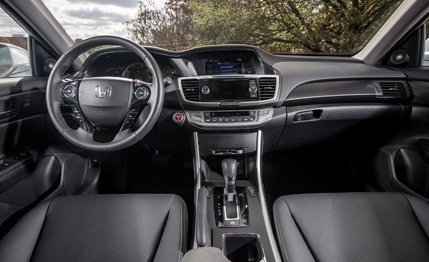One of the first automobiles, made in 1899, was actually a hybrid. Built at Loehner Werks by Ferdinand Porsche, it had an internal combustion engine and included wheel hubs that generated electric power. The Loehner-Porsche collaboration developed several new automobile technologies, including front and rear-wheel drive that were tested in several European cities.
These first hybrids did not have license plates (which were first required in New York around 1903) but now, finding a license plate number is much easier. States are beginning to require that hybrid and electric vehicles bear special plates. These alert emergency personnel to potential hazards in dealing with the batteries and related technology that pose particular dangers.
Here are some fun facts about hybrid and electric vehicles.

Who Buys Hybrid and Electric Vehicles?
More than 100 years after Ferdinand Porsche’s first model, electric and hybrid vehicles are now manufactured widely. There are more than 50 models currently available and 22 more are scheduled to go on the market next year. They are gaining market share on traditional light-duty vehicles, which have experienced a dip in sales. About 320,000 are sold each year, prompting states to consider charging a special fee to recuperate lost gas tax revenue.
Due largely to efforts to slow humanity’s contribution of carbon emissions to global warming, the technologies behind hybrid and electric vehicles are being fully developed, making significant strides in roadworthiness and longevity. Getting people to make the switch, even with a 20-year track record, continues to be a challenge for manufacturers.
Americans are among the least likely to buy an electric or hybrid vehicle, with only 53 percent polled showing interest versus more than 70 percent of Europeans and over 90 percent of Chinese. In the U.S., issues of cost, concerns about finding charging stations, and disappearing federal incentives have kept the alternative vehicle market tepid. There are currently over 113,000 electric vehicle charging stations in the U.S., with more than 40,000 in California. But in a country with more than 3.8 million square miles and a tradition of long-range road trips, it’s more difficult for Americans to wrap their minds around planning to stop every 300 miles at a fueling station with chargers. In Europe it’s much easier because it’s smaller, at 1.6 million square miles, and has 225,000 charging stations.
What Is a Hybrid Car?
Many people equate hybrids with the Toyota Prius, a quirky subcompact that arrived on the market in 1997. Despite widespread reluctance to adopt the hybrid a million were sold in the first ten years in the U.S. market, and three million were sold by mid-2013. Still, it was the butt of many jokes, including by Saturday Night Live. As time went on, Toyota tweaked the Prius design, developing several “generations” of the vehicle with improvements such as reducing the amount of space the batteries consumed in the passenger compartment.
Hybrids have dual engines, generally traditional gas and electric, powered by batteries. The vehicles are manufactured to take advantage of the most efficient uses of each motor, and automatically switch back and forth. The electric engine is used to start the vehicle from a stopped position while the internal combustion engine is better at running at high speeds for long periods but less efficient at slow speeds. A hybrid can take advantage of both but requires more technology than a traditional gas-powered engine.
What are Hybrid Cars and the Types
Knowing the types of hybrids can help prospective buyers decide which model to look for. There are four types of hybrids:
- Full hybrids – Vehicles with two engines that can run on either or a combination of both. Full hybrids aren’t plugged in to recharge as the batteries get recharged from running the motor. These vehicles include Toyota Corolla and Camry, Honda Insight, Hyundai Sonata, and Lexus LC 500h.
- Mild hybrids – These vehicles have two engines, one electric and one internal combustion, which always run simultaneously. Models that use this engine include Kia Sportage, Mercedes Benz S400, and Honda Civic, Insight, and Accord.
- Plug-in hybrids (PHEV) – Vehicles that run on batteries and must be plugged in to recharge. Models include Hyundai Ioniq, Toyota Prius, Chevy Volt, BMWi3 and i8, Porsche 918 Spyder, and Chrysler Pacifica Hybrid.
- Range extenders – Vehicles with a special auxiliary engine (electric or internal combustion) designed to recharge batteries on the go. Types of vehicles with range extenders built-in are Chevy Volt and BMWi3.
What are Electric Cars
All-electric vehicles are gaining popularity around the world as battery efficiency improves. These vehicles have no discernible emissions and virtually silent engines. Along with traditional car manufacturers adding all-electric vehicles to their lineups, new car makers have emerged, such as Rivian, which makes electric pickup trucks. Polestar, a Scandinavian company, is another new player that produces sedans. Start-up automaker Lucid plans to have a luxury sedan on the market by late 2022.
Tesla is one of the best-known electric vehicle manufacturers. Since 2009, Tesla has produced the Roadster, followed in 2012 by the Model S. Rather than creating economy cars, Tesla produces more luxurious vehicles that command a high price and have tremendous engine torque. Tesla is also known for the company’s mercurial CEO, Elon Musk, who has developed expanded uses for the batteries his company produces, including household power.
Several luxury brands have followed Tesla’s path in electric vehicles, including the Audi e-Tron GT, Volvo XC-40, Ford Mustang Mach-E, and Porsche Taycan.
Pros & Cons of Hybrids vs Electric Cars
The average owner can expect to save $9,000 in fuel and $4,500 in maintenance and repairs over the course of a vehicle’s 200,000-mile lifetime. The median range of these vehicles is 234 miles on a complete charge but even some of the newest vehicles, like the electric Mini Cooper, have a range of just more than 100 miles. Perhaps they’re banking on the fact that average Americans drive only 29 miles a day.
Saving money at the pump isn’t as much of an incentive to Americans as one might guess. Even financial incentives from the government aren’t moving a significant portion of people to adopt new types of vehicles. One new acronym that’s helping is “mpg-e” which gives consumers the equivalent of miles per gallon for hybrid vehicles.
Hybrid vehicles still feel “new” to many American consumers, whose adoption rate of alternative fuel vehicles lags behind other countries. Americans may be dubious about saving on fuel costs when faced with higher-than-average purchase prices as well as repair and maintenance bills. For those who are comfortable with most aspects of internal combustion engines, switching to a hybrid or electric model may be beyond their comfort zone, including new ways of fueling and new terminology.
One study showed that many Americans did not have any personal experience with alternative fuel vehicles, making them less of a consideration when purchasing a car. People are more likely to consider a hybrid if a close friend or neighbor has one, it said. The lack of variety in available models was another issue that is slowly going away now that truck and SUV manufacturers like Ford are developing hybrids and electric models.
Range is the biggest psychological hurdle that most face when considering moving to a vehicle with an unfamiliar engine configuration. The average range of an EV is currently under 300 miles, and some charging stations take up to 20 hours to fully replenish battery life.
Planning trips according to the locations of charging stations (even at hotels) is new to a lot of people. Fortunately, many hybrids and electric cars are equipped with GPS that estimates the amount of battery power remaining and suggests stops accordingly.
Depreciation, or the value of a vehicle after a period of time, is an issue with many hybrid and electric models. In a study of 193 vehicles, some hybrid and electric vehicles had lost more than half of their value in five years. Such steep depreciation negates the fuel savings. The all-electric Nissan Leaf and Ford Energy were among the worst in the study while the Toyota Highlander and Camry fared better. The study also showed that the Tesla Model S lost half of its value in five years. The average electric/hybrid vehicle depreciation was 47 percent.
Conclusion
It takes time to change people’s habits. America’s car culture runs deep. Moving people from longtime habitual use of internal combustion engines to hybrids and Evs is like asking them to give up hamburgers for veggie burgers.
Americans are becoming more concerned with global climate change due to the growing intensity of weather patterns and palpable changes to the environment. This makes them likely to revisit hybrid and electric options. Some European governments have set a goal to ban traditional gasoline engines in passenger vehicles. Frequent changes to government directives hinder American progress in this area. Much of the country is loath to follow such a directive as it runs counter-intuitive to the national myth of self-determination.
With major automobile manufacturers rolling out new hybrid and electric models each year, interest in these vehicles is certain to increase. As Americans get more comfortable with new vehicle technology, shortcomings in charging stations and battery range will improve. The federal government will certainly invest in charging technology if they’re serious about meeting emissions goals to arrest climate change.








